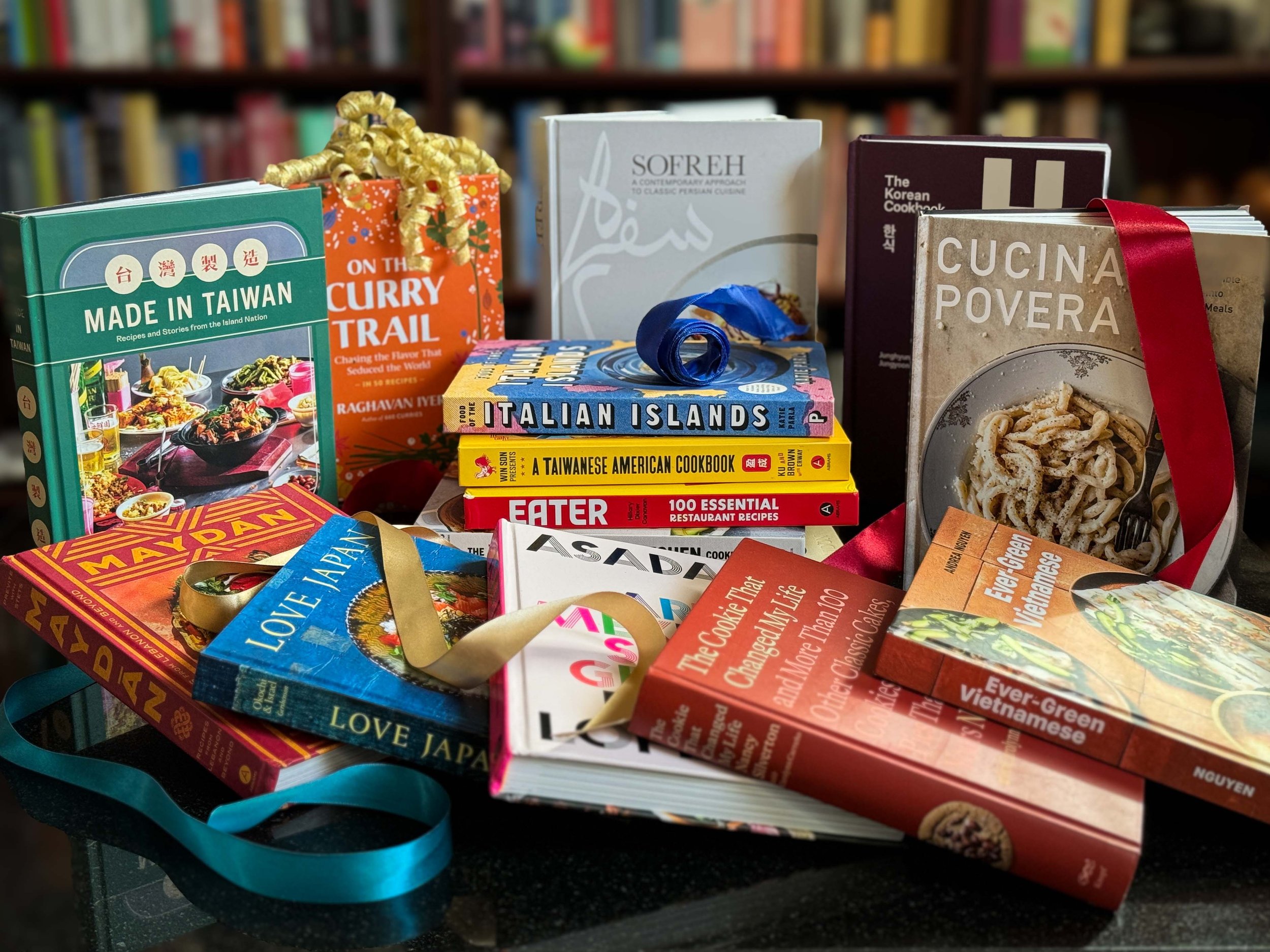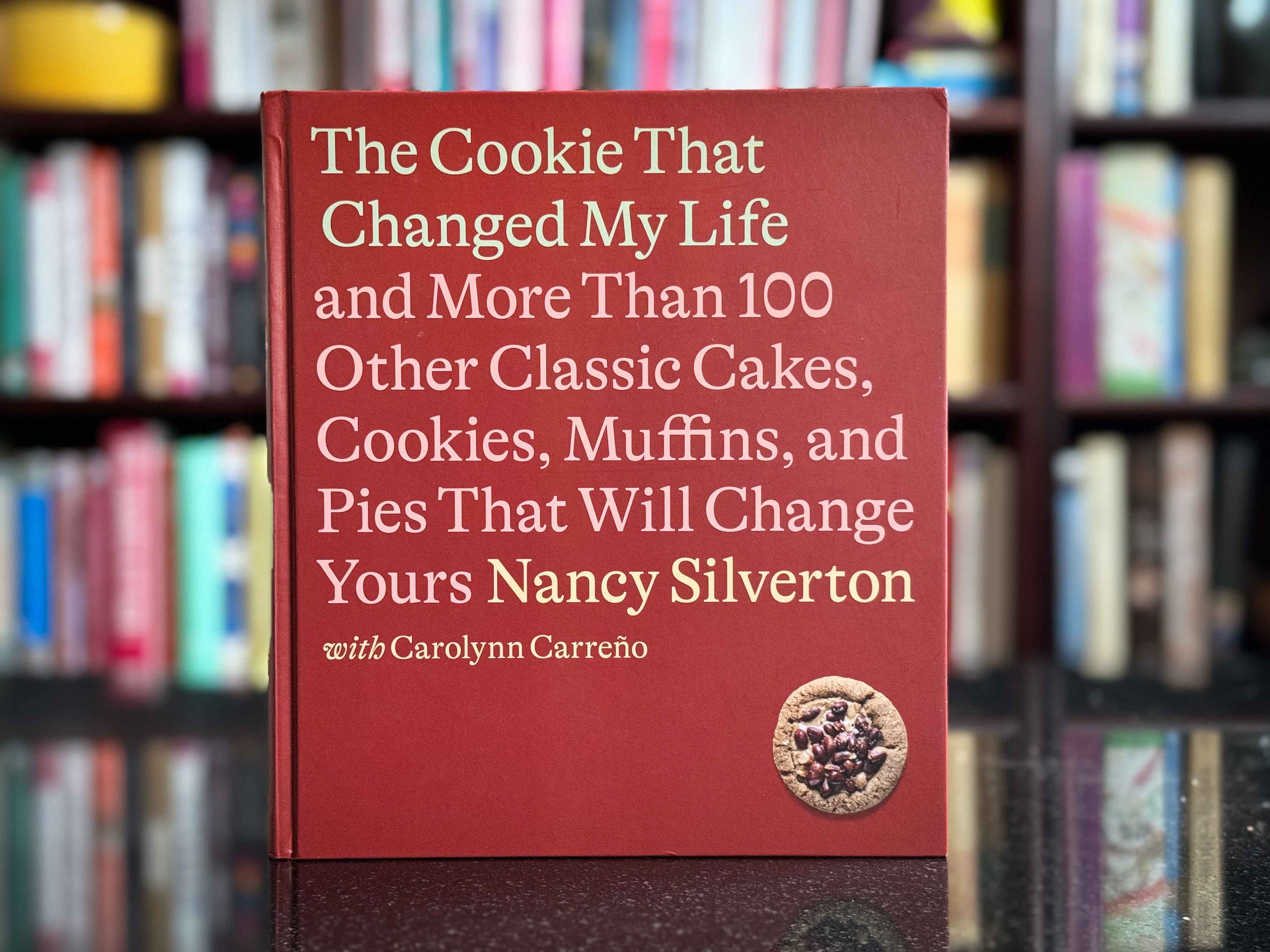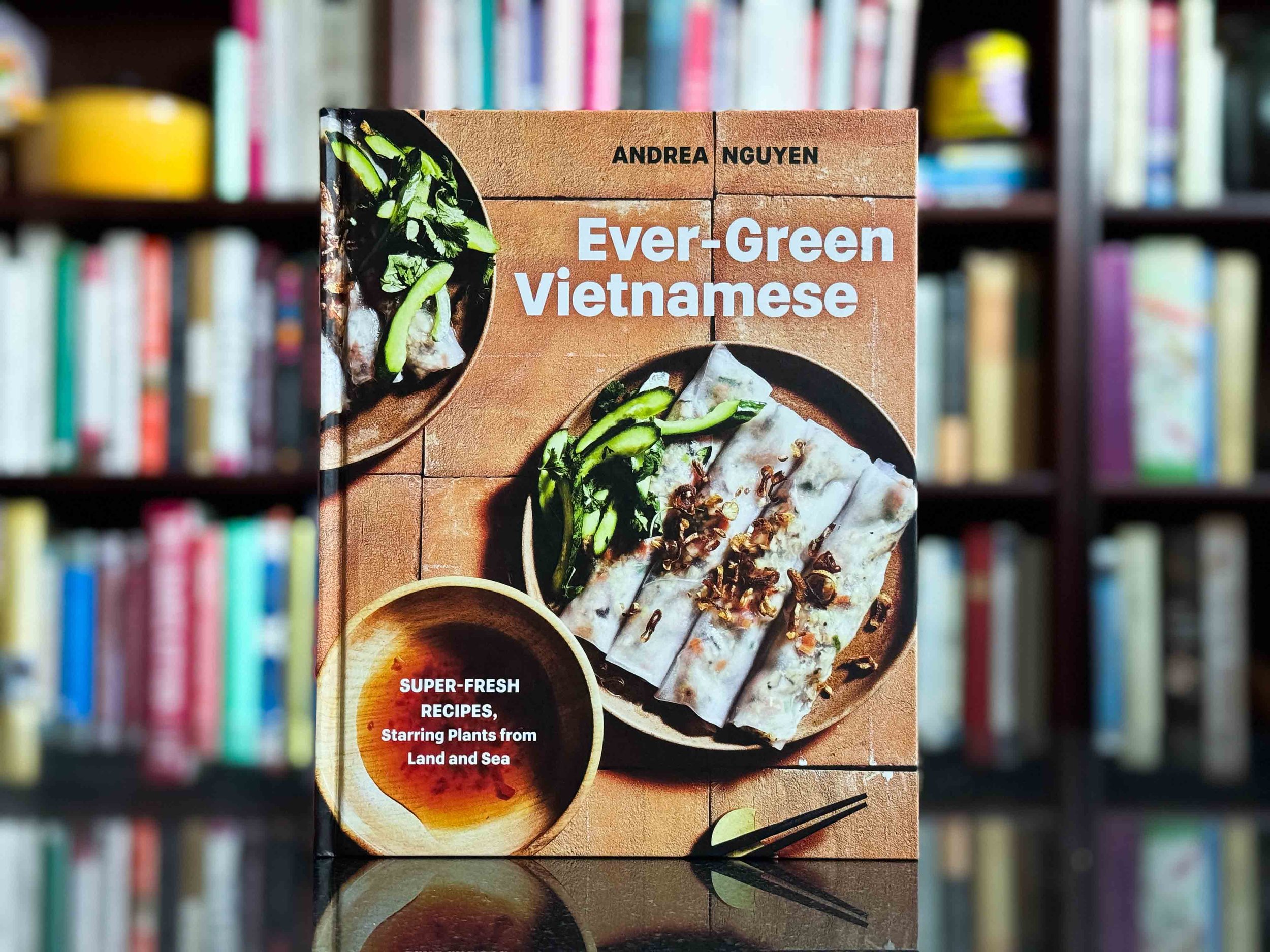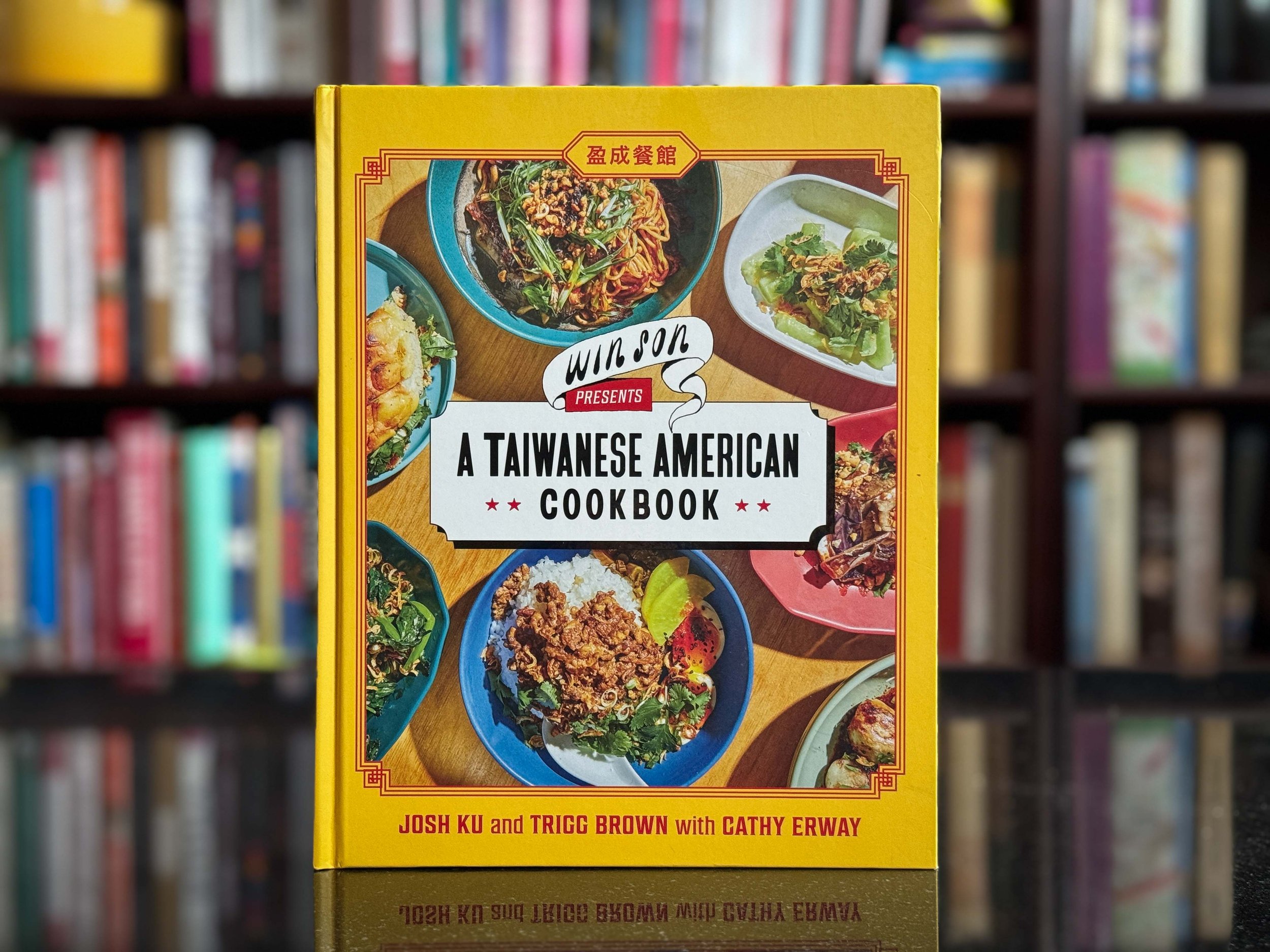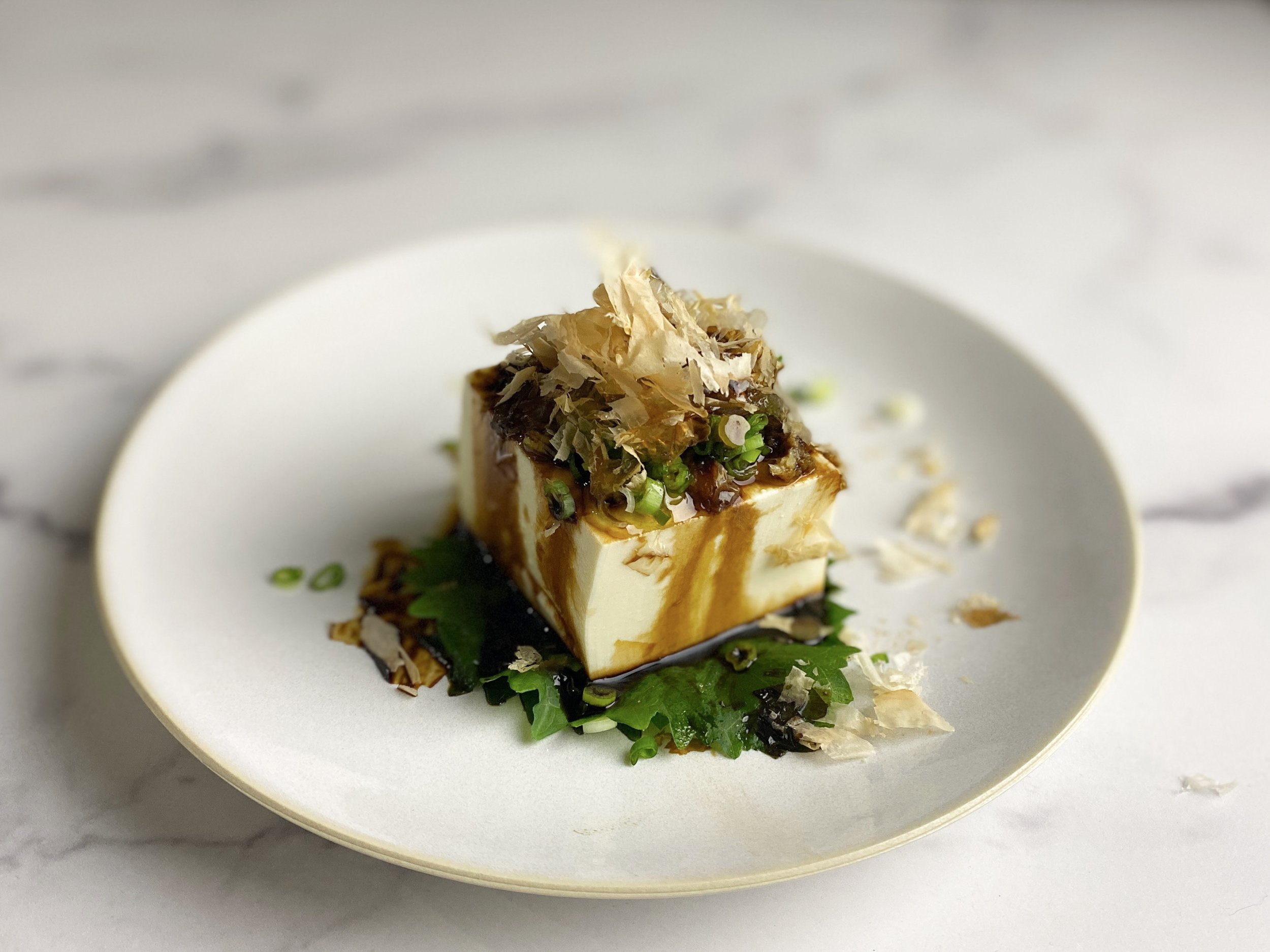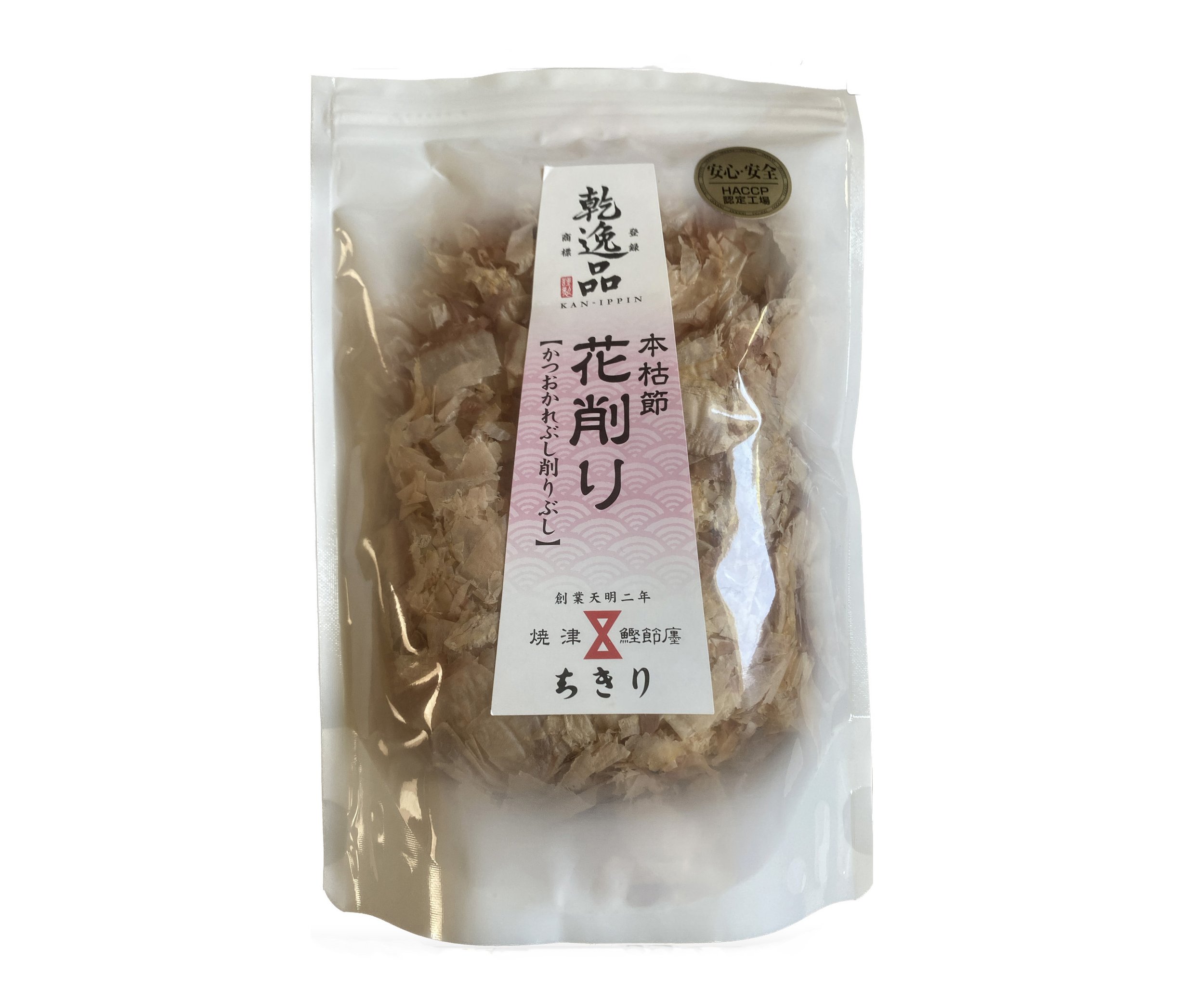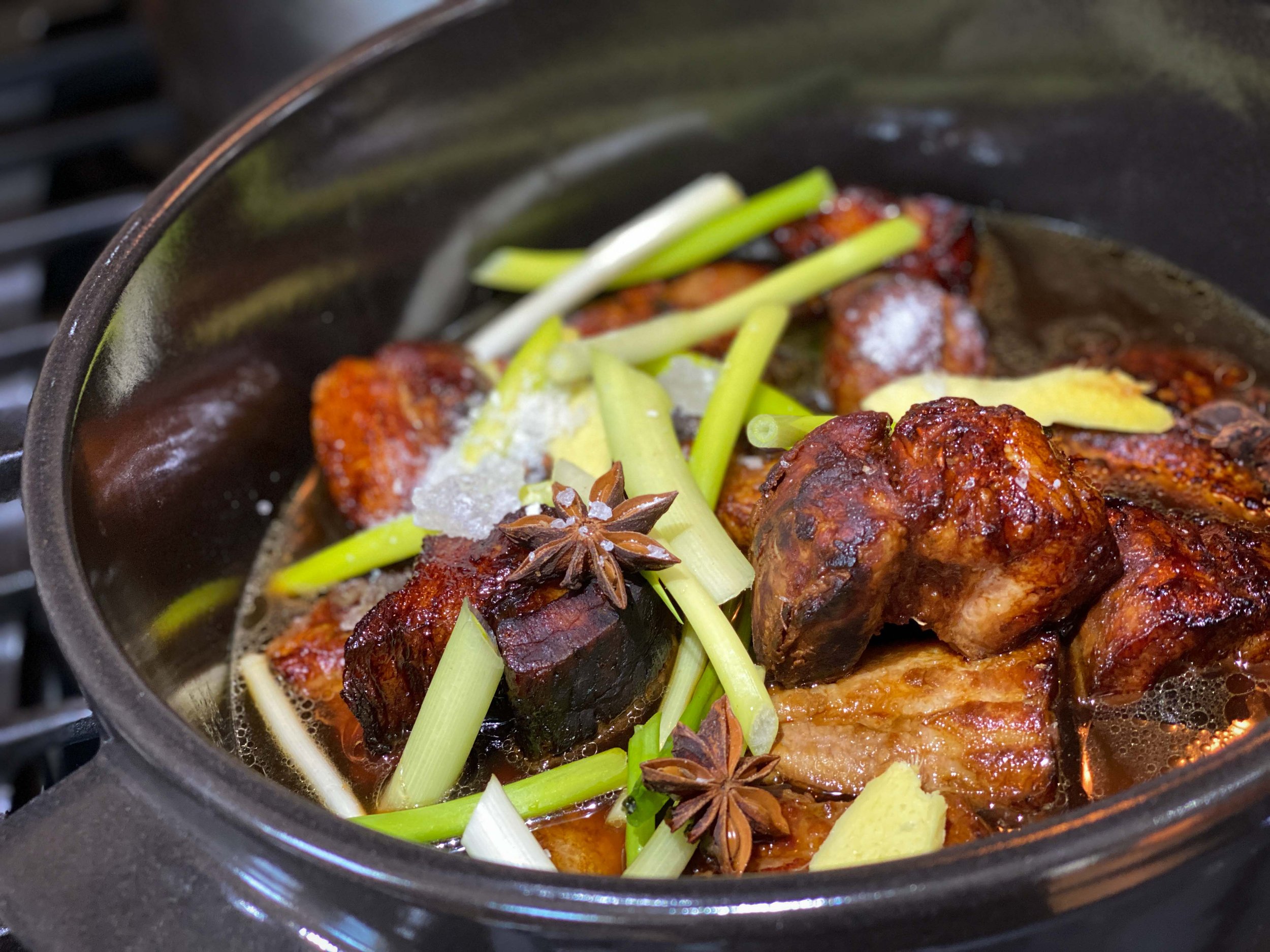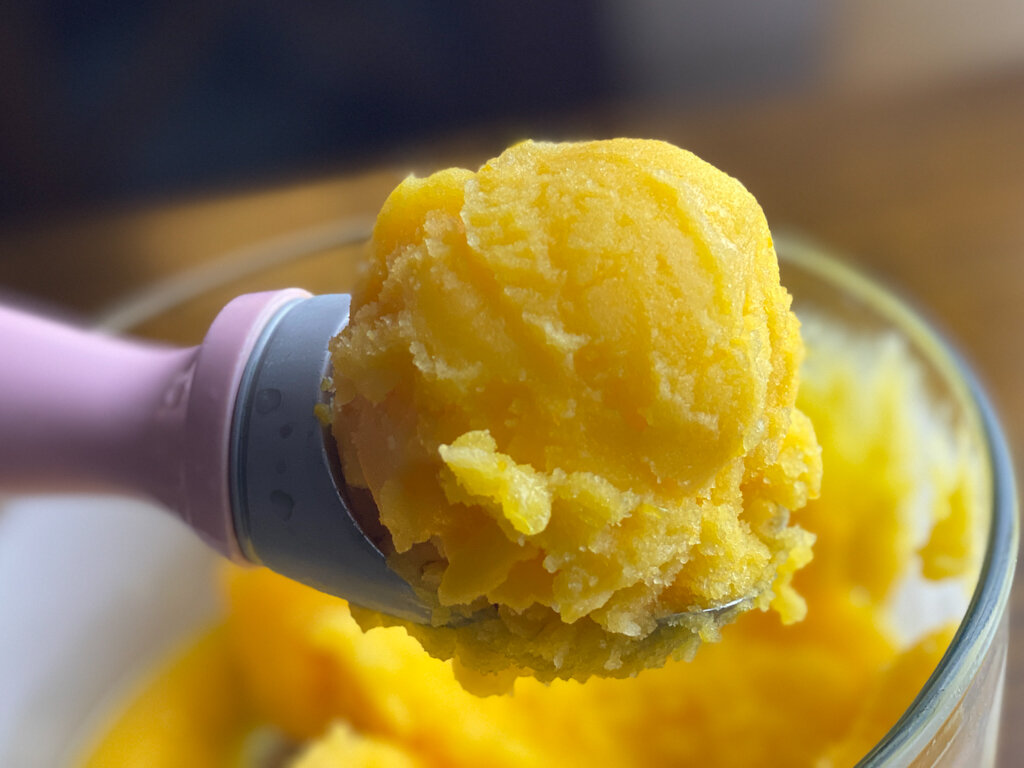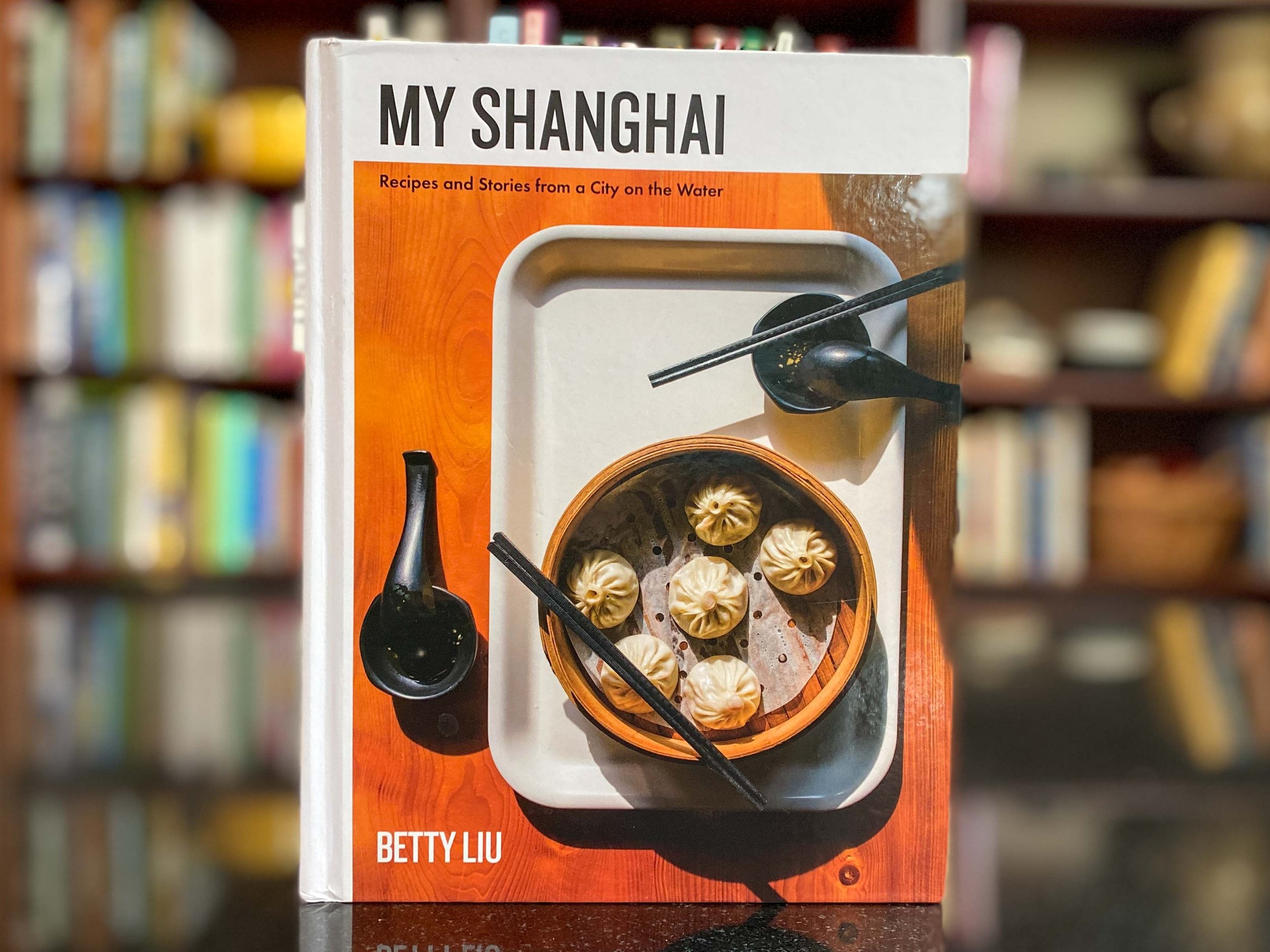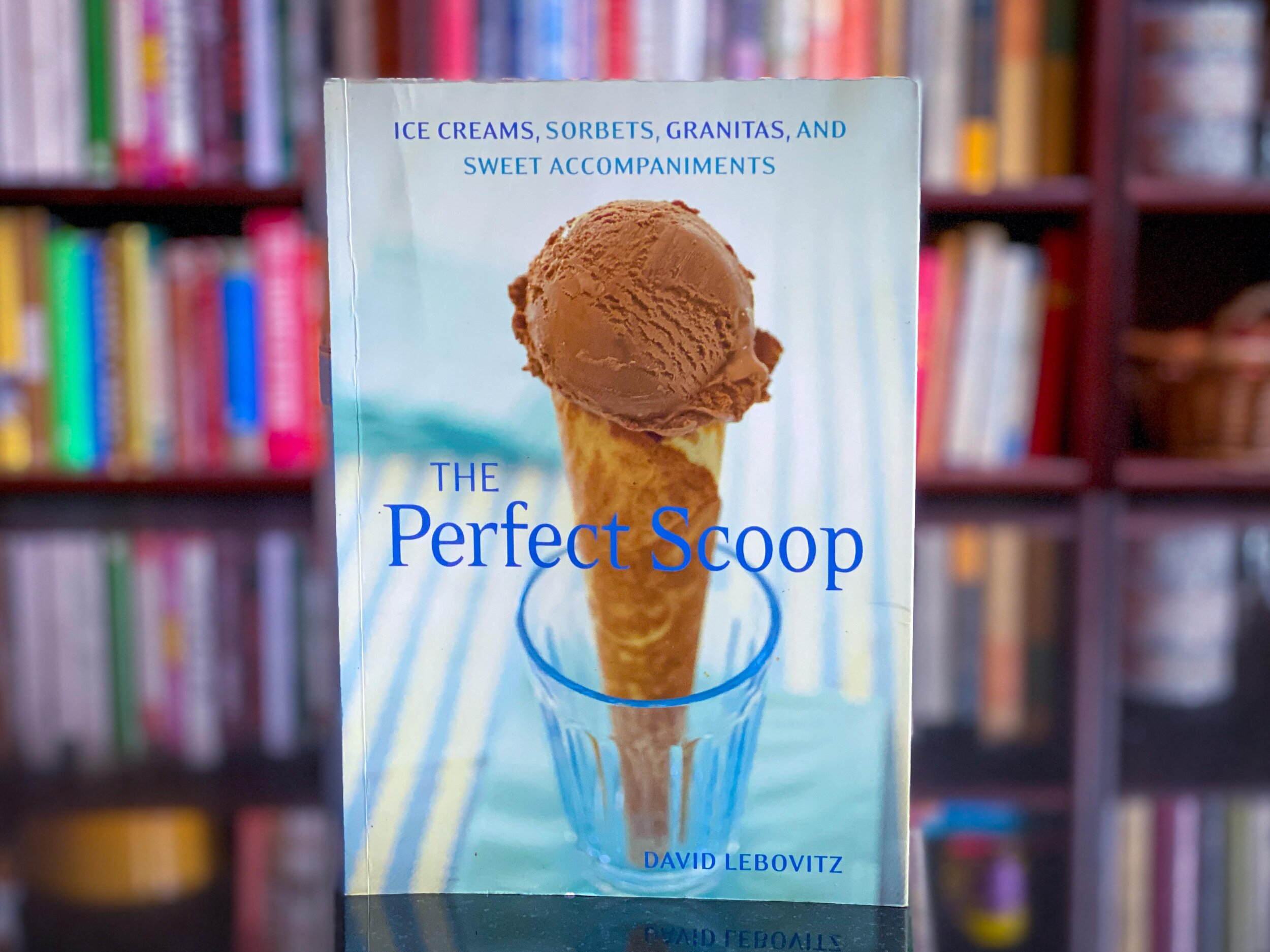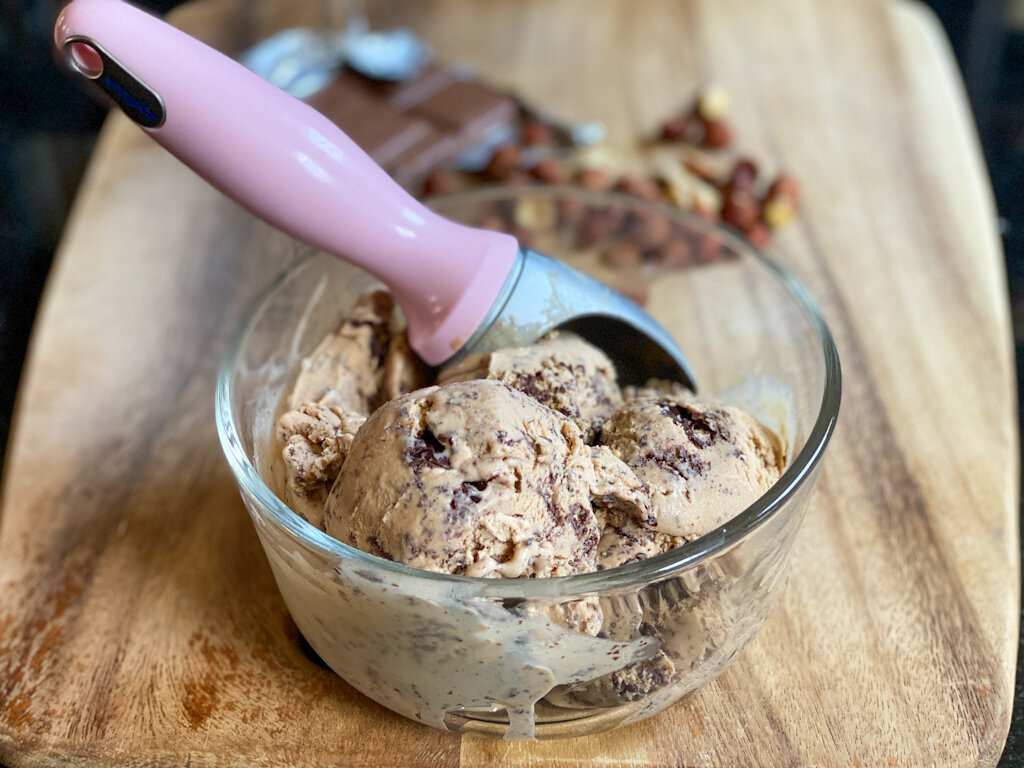By Leslie Brenner
[Editor’s note: This is part II of our two-part Ultimate Cookbook Gift Guide. Read Part I.]
Deliciously all over the map: That’s this year in cookbooks. One dives into Italian peasant food. Another offers Japanese home cooking as expressed by a fairly recent immigrant and a nice Jewish boy who fell in love, both chefs. The next explores the Mexican tradition of backyard grilling, carne asada. Yet another illuminates the Taiwanese American experience as played out at a popular Brooklyn restaurant and bakery.
In fact, Brooklyn restaurants expressed in books was big this year. That Japanese-Jewish fusion happens in Williamsburg, at Shalom Japan. A Persian place in Prospect Heights — Sofreh — gave us another exciting title.
The renowned Washington, D.C. restaurant Maydan and its siblings spawned its own volume, filled with gorgeous Lebanese-inspired dishes. And that Mexican grilling book? It’s from the co-owner of Guelaguetza, the legendary Oaxacan restaurant in L.A.
All those volumes try not to be too cheffy or restauranty, instead skewing delightfully homey. That’s no doubt in response to a publishing backlash against restaurant cookbooks; the cooking public, these days, wants great recipes for real food that can be achieved at home without too much fuss. That’s always been our jam, too, at Cooks Without Borders.
If only the recipes that filled all these books this year had been properly tested and more carefully copy-edited. As a group, this year’s new books are rife with mistakes that can easily lead to recipe flops. Not all, to be sure; those from seasoned pros, like Nancy Silverton, Andrea Nguyen and Katie Parla, have yielded only fabulous results in our test kitchen. Some other books on this list are recommended with caveats; there may be problems lurking in their pages, but they’ll still make great gifts for certain kinds of cooks (or armchair cooks). Still others are included that we have yet to test recipes from — yep, I’m an incurable optimist. The untested titles are flagged.
Here’s the good news: Any problems we find in recipes get corrected as we adapt them for this site. Click on our recipe links, and you can feel confident the recipe will work. We very much hope you’ll enjoy it as much as we did.
Here we go: our recommended new and notable titles for 2023. Between this, and Part I of our Ultimate Cookbook Gift Guide, you should have no trouble finding the perfect gift for every cook in your life. And maybe a little something for yourself, too — you deserve it.
The Cookie That Changed My Life
It’s not every day that Nancy Silverton publishes a cookbook. “Making the absolute best version of the familiar baked goods that we all know and love” was her idea behind this one, and the results are (so far) pretty wonderful. We’ve now tested three — a Devil’s Food Cake with Fudge Frosting, Almond Biscotti in the style of soft cantucci (the real Italian word for biscotti), and Cheese Coins rimmed with cracked black pepper, which I’m calling Cacio e Pepe Cheese Coins. This is a baking book that every serious cook needs to own. I can tell you that Silverton pulls no punches in her recipes. She’s not afraid of using a pound of chocolate, and she triples our previous conception of how much vanilla to use in anything.
Find the recipe for the Cacio e Pepe Cheese Coins here. Look for a review soon.
The Cookie That Changed My Life: And More than 100 Other Classic Cakes, Cookies, Muffins and Pies That Will Change Yours, by Nancy Silverton (with Carolynn CarreñO), Ten Speed Press, $40.
BUY ‘The Cookie’ at Bookshop
BUY ‘The Cookie’ at Amazon
~
Cucina Povera
I love the concept of this book, which is stuck throughout with Post-Its on the myriad recipes I can’t wait to try. Three involve Savoy cabbage, which I adore and haven’t been able to find lately. (Buckwheat Pasta with Cabbage and Cheese!) A few others I have my eye on: Artichoke, Fava Bean, Pea and Lettuce Stew (for the spring); Pork Braised in White Wine; Savory Swiss Chard and Parmigian-Reggiano Pie. The vibe is irresistible comfort. The one recipe I’ve tried turned out great: Roasted Pepper Rolls Stuffed with Tuna and Capers (Involtini di peperoni alla piemontese).
Cucina Povera: The Italian Way of Transforming Humble Ingredients into Unforgettable Meals, by Giulia Scarpaleggia, Artisan, $44.
BUY ‘Cucina Povera’ at Bookshop
BUY ‘Cucina Povera’ at Amazon
~
Ever-Green Vietnamese
Andrea Nguyen, the preemient authority on Vietnamese cooking in the United States, is also one of our best cookbook authors. Her recipes are wonderfully appealing, and they work — beautifully. Her seventh cookbook focuses on a loose definition of plant-based: It’s not strictly vegetarian or vegan, but vegetables take center stage. Read our review, try the recipes, buy the book.
Ever-Green Vietnamese: Super-Fresh Recipes, Starring Plants from Land and Sea, by Andrea Nguyen, Ten Speed Press, $35.
~
Food of the Italian Islands
Treat someone you love to a trip Capri — and Sardinia, and Sicily. Vicarious, perhaps, but they can count on lots of messy, delicious food along the way. Read our review, try the recipes, buy the book.
Food of the Italian Islands, by Katie Parla, Parla Publishing, $35.
~
Love Japan
Co-authors Sawako Okochi and Aaron Israel are the married couple and the chef-owners of Shalom Japan in Brooklyn (she’s Japanese, he’s Jewish). They may be restaurateurs, but happily the recipes in this enticing book skew homey; many point to what they love to cook in their own home. Most of the dishes are Japanese; others are Japanese-Jewish fusion. (Home-Style Matzoh Ball Ramen? Sign me up!) Their Smashed Cucumber and Wakame Salad was super easy and turned out well — here’s the recipe.
Love Japan: Recipes from our Japanese American Kitchen, by Sawako Okochi and Aaron Israel with Gabriella Gershenson, Ten Speed Press, $30.
BUY ‘Love Japan’ at Bookshop
BUY ‘Love Japan’ at Amazon
~
Asada: The Art of Mexican Style Grilling
This season, the greatest excitement I had flipping through a book and identifying can’t-wait-to-cook recipes was when Asada — Bricia Lopez’s book — came in the mail. So many dishes looked so amazing. Lopez co-owns Guelaguetza, L.A.’s legendary Oaxacan restaurant, but this book is about carne asada: the backyard grilling tradition that’s popular all over Mexico, and anywhere Mexican ex-pats, immigrants or their offspring live. It includes lots of centerpieces to grill, along with all the salsas and sides to serve with them.
We dove in and tried the recipe for Carne Asada Clásica — flap steak marinated overnight, grilled, sliced and served with homemade tortillas and salsas. [Try the recipe.] We were so glad we did. We also loved a recipe for Guacamole Tatemado en Molcajete — which adds lots of grilled scallions and fresh mint to the classic avocado mash.
Some other recipes gave us trouble. A small salad of 2 Persian cucumbers and 8 radishes, for instance, called for a tablespoon of salt and two teaspoons of pepper; I cut the salt by two thirds and the pepper in half, and even that was on the salty-peppery side. Still, there are some wonderful ideas in the book, and so much deliciousness. Therefore I recommend it — with that caveat that it’s best for experienced cooks who know how to eyeball a recipe and spot potential pinch-points, or for those keen on flipping through for inspiration.
Asada: The Art of Mexican Style Grilling, by Bricia lopez with Javier cabral, abrams, $40.
BUY ‘Asada’ at Bookshop
BUY ‘Asada’ at Amazon
~
Win Son Presents a Taiwanese American Cookbook
So much fun in the pages of this book from Josh Ku and Trigg Brown, the founders of Brooklyn’s Win Son and Win Son Bakery. Again, I marked oodles of recipe to try. Like the Shrimp Cakes that fill Win Son’s “Nutritious Sandwich.” Or Flies’ Head — the dish that inspired them to form a partnership and start a restaurant. (There are no flies in it; rather flecks of pork and fermented black beans, along with a lot of flowering chives.) Clams with Basil, a classic Taiwanese re chao (hot stir-fry) dish, looks splendid as well.
We dove in and fell in love with Lamb Wontons, served on a shmear of labneh (how original!), and drizzled with a Sweet Soy Dipping Sauce, cilantro leaves, cumin seeds, chili crisp and a fantastically vibrant “‘Lamb’ Spice Mix.” Wow! That recipe worked great, and so did Green Soybean, Tofu Skin and Pea Shoot Salad (though I had to adjust amounts on radically on one of the ingredients). San Bei Ji — Three-Cup Chicken (another Taiwanese classic) — turned out well, but the instructions needed some clarification and timing required adjusting. That’ll all be fixed when we bring you a full review. In the meantime, please try the Lamb Wontons. Again, this is a book that’s more suited to experienced cooks who will love the ideas and know when to tweak, compensate and fix.
Win Son Presents a Taiwanese American Cookbook, by Josh ku and Trigg Brown with Cathy Erway, Abrams, $40.
BUY ‘Win Son Presents’ at Bookshop
BUY ‘Win Son Presents’ at Amazon
~
Gohan: Everyday Japanese Cooking
Here’s one I’d recommend for fans of Emiko Davies — the Tuscany-based Japanese-born food writer and photographer who blogs and writes about regional Italian cooking. Those diving into Japanese cooking for the first time will also find it interesting. “Gohan’ means ‘rice’ in Japanese, and it also refers to the “everyday home-cooked meal.” As Davies’ Japanese mother explains it, “Nothing fussy, but quick and easy, and nourishing. One that is made with love.” I appreciate the section on hosting a temaki (sushi hand-roll) party, and went crazy over her recipe for Chilled Dressed Tofu. The illustrated cover captures its charms, and the photos (and more illustrations) inside are lovely.
Gohan: Everyday Japanese Cooking, by Emiko Davies, Smith Street Books, $35.
BUY ‘Gohan’ at Bookshop
BUY ‘Gohan’ at Amazon
~
We’re Also Excited About . . .
The following titles are those we haven’t yet tested recipes from, but we have high hopes for.
Sofreh: A Contemporary Approach to Classic Persian Cuisine
By Nasim Alikhani with Theresa Gambacorta, Knopf, $40.
Nasim Alikhani has such a great story: She opened her Brooklyn restaurant Sofreh five years ago at the age of 59, never having worked in a restaurant, but with a wealth of Iranian home cooking experience under her belt. Based on the gorgeous photos and the way the recipes are written, we can’t wait to dive in and cook. [Recipes not yet tested.]
BUY ‘Sofreh’ at Bookshop
BUY ‘Sofreh’ at Amazon
~
The Korean Cookbook
By Junghyun Park and Jungyoon Choi, Phaidon, $55.
This impressive, 496-page volume was written by two chefs, but the focus is home cooking and tradition. The history-filled introduction to hansik (Korean cooking) is on its own worth the price of admission, and the recipes — particularly the banchan (side dishes) — look wonderufl. [Recipes not yet tested.]
BUY ‘The Korean Cookbook’ at Bookshop
BUY ‘The Korean Cookbook’ at Amazon
~
On the Curry Trail: Chasing the Flavor that Seduced the World
By Raghavan Iyer, Workman Publishing, $30.
From the award-winning author of 660 Curries, this smart little illustrated volume tackles the question what makes a curry — with enticing recipes from six continents. [Recipes not yet tested.]
BUY ‘On the Curry Trail’ at Bookshop
BUY ‘On the Curry Trail’ at Amazon
~
Taste the World in Marseille
By Vérane Frédiani, Éditions de La Martinière/Abrams, $30
From all reports, the multicultural food scene in Marseille is exploding, and this exuberant book captures it all with a giant heart. It’ll make you want to go there, as much as it’ll make you want to cook. And if you do go, you’ll certainly want to have the book (a paperback) in hand as a guide. [Recipes not yet tested.]
BUY ‘Taste the World in Marseille’ at Bookshop
BUY ‘Taste the World in Marseille’ at Amazon
~
Made in Taiwan: Recipes and Stories from the Island Nation
By Clarissa Wei with Ivy Chen, Simon Element, $40.
Taipei native and food writer Clarissa Wei has put together an ambitious and impressive volume, in collaboration with Taiwanese cooking instructor Ivy Chen, that aims to tell the full story of Taiwanese cuisine. Home cooks from all over the island nation contribute their dishes. The result is a book that anyone who loves Taiwanese cooking or interested in learning about it should be thrilled to receive. [Recipes not yet tested.]
BUY ‘Made in Taiwan’ at Bookshop
BUY ‘Made in Taiwan’ at Amazon
~
Maydān: Recipes from Lebanon and Beyond
By Rose Previte with Marah Stets, Abrams, $40
Rose Previte, owner of Washington, D.C. restaurants Maydān, Compass Rose, Kirby Club and Medina, mined her travels all across the Levant, North Africa and Georgia to put together this gorgeous book. From Taktouka (Moroccan roasted pepper and tomato spread) to a lamb shoulder with Syrian seven spice that takes 8 hours to roast to Lebanon’s famous date-filled butter cookies, mamouls, the recipes look incredible. Plus, the book itself is a beautiful object — a rarer thing these days. [Recipes not yet tested.]
BUY ‘Maydān’ at Bookshop
BUY ‘Maydān’ at Amazon
~
Eater: 100 Essential Restaurant Recipes
By Hillary Dixler Canavan, Abrams, $35.
Eater’s Restaurant Editor chose iconic recipes from establishments all over the U.S. for this super-fun book, a snapshot of eating in America in our time. [Recipes not yet tested.]
BUY ‘Eater’ at Bookshop
BUY ‘Eater’ at Amazon
~
The World Central Kitchen Cookbook: Feeding Humanity, Feeding Hope
By José Andrés & World Central Kitchen with Sam Chapple-Sokol, Foreword by Stephen Colbert, Clarkson Potter, $35
“This is a place that is full of empathy and hope, a place where we are building longer tables, not higher walls,” writes super-hero chef José Andrés in his Introduction. He’s talking about the world of World Central Kitchen. “Wherever there’s a fight so that hungry people may eat . . . we’ll be there.” The book is meant to inspire to us to cook for a neighbor in need, volunteer at a local food pantry, or join WCK’s Relief Team responding to a disaster. Andrés uses the phrase “Cooks Without Borders” as a section head, which tickles us. Of course we support the organization! Please join us in raising money for their efforts. Buy the book; cook the recipes that come from WCK’s missions. [Recipes not yet tested.]
BUY ‘World Central Kitchen Cookbook’ at Bookshop
BUY ‘World Central Kitchen Cookbook’ at Amazon

